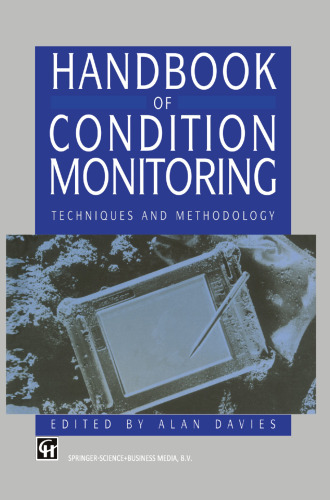The first edition of Elements of Ecology appeared in 1976 as
a short version of Ecology and Field Biology. Since that time,
Elements of Ecology has evolved into a textbook intended
for use in a one-semester introduction to ecology course.
Although the primary readership will be students majoring
in the life sciences, in writing this text we were guided by
our belief that ecology should be part of a liberal education.
We believe that students who major in such diverse fields as
economics,
sociology, engineering, political science, law, history,
English, languages, and the like should have some basic
understanding of ecology for the simple reason that it has an
impact on their lives.
New for the Ninth Edition
For those familiar with this text, you will notice a number of
changes in this new edition of Elements of Ecology. In addition
to dramatic improvements to the illustrations and updating
many of the examples and topics to reflect the most recent
research and results in the field of ecology, we have made a
number of changes in the organization and content of the text.
An important objective of the text is to use the concept of adaptation
through natural selection as a framework for unifying the
study of ecology, linking pattern and process across the hierarchical
levels of ecological study: individual organisms, populations,
communities, and ecosystems. Many of the changes
made in previous editions have focused on this objective, and
the changes to this edition continue to work toward this goal.
Treatment of Metapopulations
Beginning with the 7th Edition we included a separate chapter
covering the topic of metapopulations (Chapter 12, 8th edition)
for the first time. It was our opinion that the study of metapopulations
had become a central focus in both landscape and conservation
ecology and that it merited a more detailed treatment
within the framework of introductory ecology. Although this
chapter has consistently received high praise from reviewers,
comments have suggested to us that the chapter functions more
as a reference for the instructors rather than a chapter that is
directly assigned in course readings. The reason for this is that
most courses do not have the time to cover metapopulations
as a separate subject, but rather incorporate an introduction to
metapopulations in the broader context of the discussion of
population structure. To address these concerns, in the 9th edition
we have deleted the separate chapter on metapopulations
and moved the discussion to Chapter 19: Landscape Dynamics.
Expanded Coverage of Landscape Ecology
The incorporation of metapopulation dynamics into Chapter 19
was a part of a larger, overall revision of Landscape Dynamics
in the 9th edition. Chapter 19 has been reorganized and now
includes a much broader coverage of topics and presentation of
current research.
چکیده فارسی
اولین ویرایش عناصر بوم شناسی در سال 1976 با عنوان
ظاهر شد نسخه کوتاهی از اکولوژی و زیست شناسی میدانی. از آن زمان،
عناصر اکولوژی تبدیل به کتاب درسی مورد نظر شده است
برای استفاده در دوره یک ترم مقدماتی بوم شناسی.
اگر چه خوانندگان اولیه دانشجویان رشته خواهند بود
در علوم زیستی در نگارش این متن از
راهنمایی شدیم اعتقاد ما به این است که بوم شناسی باید بخشی از آموزش لیبرال باشد.
ما معتقدیم که دانشجویانی که در رشتههای متنوعی مانند
تحصیل میکنند اقتصاد،
جامعه شناسی، مهندسی، علوم سیاسی، حقوق، تاریخ،
زبان انگلیسی، زبانها و مواردی از این قبیل باید پایهای داشته باشند
درک اکولوژی به این دلیل ساده که دارای یک
است تاثیر بر زندگی آنها.
جدید برای نسخه نهم
برای کسانی که با این متن آشنا هستند، تعدادی از
را مشاهده خواهید کرد تغییرات در این نسخه جدید عناصر اکولوژی. علاوه بر این
به پیشرفت های چشمگیر در تصاویر و به روز رسانی
بسیاری از مثال ها و موضوعاتی که جدیدترین آنها را منعکس می کند
تحقیقات و نتایج در زمینه بوم شناسی، یک
ساخته ایم تعداد تغییرات در سازمان و محتوای متن.
هدف مهم متن استفاده از مفهوم تطبیق است
از طریق انتخاب طبیعی به عنوان چارچوبی برای متحد کردن
مطالعه اکولوژی، پیوند الگو و فرآیند در سراسر سلسله مراتب
سطوح مطالعه اکولوژیکی: ارگانیسم های فردی، جمعیت ها،
جوامع و اکوسیستم ها بسیاری از تغییرات
ساخته شده در نسخه های قبلی بر این هدف تمرکز کرده اند و
تغییرات این نسخه برای رسیدن به این هدف همچنان ادامه دارد.
درمان فراجمعیت ها
با شروع نسخه هفتم، ما یک فصل جداگانه را گنجانده ایم
پوشش موضوع فراجمعیت ها (فصل 12، ویرایش هشتم)
برای اولین بار. نظر ما این بود که مطالعه فراجمعیت ها
هم در منظر و هم در حفاظت به کانون اصلی تبدیل شده بود
اکولوژی و اینکه مستحق درمان دقیق تری است
در چارچوب اکولوژی مقدماتی. اگرچه این
فصل به طور مداوم تمجیدهای بالایی را از سوی بازبینان دریافت کرده است،
نظرات به ما پیشنهاد کرده اند که این فصل عملکرد بیشتری دارد
به عنوان مرجعی برای مربیان به جای فصلی که
است به طور مستقیم در خواندن دوره اختصاص داده شده است. دلیل این امر این است که
اکثر دوره ها زمان لازم برای پوشش فراجمعیت ها را ندارند
به عنوان یک موضوع جداگانه، بلکه مقدمه ای برای
را در بر می گیرد فراجمعیت ها در زمینه وسیع تر بحث
ساختار جمعیت برای رفع این نگرانی ها، در ویرایش نهم
ما فصل جداگانه فراجمعیت ها را حذف کرده ایم
و بحث را به فصل 19: دینامیک منظره منتقل کرد.
پوشش گسترده اکولوژی منظر
ادغام دینامیک فراجمعیت در فصل 19
بخشی از بازنگری کلی و بزرگتر Landscape Dynamics
بود در ویرایش نهم فصل 19 دوباره سازماندهی شد و اکنون
شامل پوشش بسیار گسترده تری از موضوعات و ارائه
است تحقیقات فعلی.
ادامه ...
بستن ...
Ebook details:
عنوان: Elements of Ecology with MasteringBiology, Global Edition 9781292077505
نویسنده: Amazon.com
ناشر: Pearson Education Limited; 9th edition edition
زبان: English
شابک: 1292077506, 978-1292077505
حجم: 63 Mb
فرمت: True Pdf
ادامه ...
بستن ...










